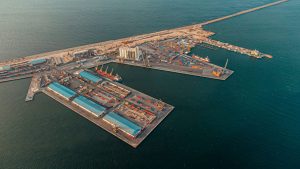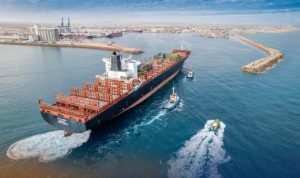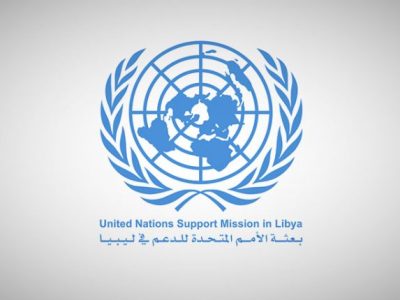Libya Port Development Poised to Transform Mediterranean Trade
Libya’s long Mediterranean coastline and central location between Europe, the Maghreb and the Middle East give it natural advantage as a shipping hub. Recent conflicts in the Red Sea have sharply rerouted global trade. Red Sea attacks in early 2024 halved Suez Canal transit, forcing many Asia-Europe vessels to circle the Cape of Good Hope. This disruption has lifted volumes at Western Mediterranean ports (Spain’s Valencia and Barcelona saw container traffic rise ~14-24% in Jan-Sep 2024) and underscored the importance of alternate routes. Libya can leverage these trends by upgrading its ports and logistics network to capture diverted trade between Europe, Africa and Asia.
Major Libyan ports serve different regions and functions. Misrata is the busiest container port and home to a government-backed free zone. It has become a regional hub when Tripoli and Benghazi were blockaded during conflict. In 2020 Misrata handled over 1.2 million TEU (a 10% increase year-on-year), and today it offers modern facilities and digital systems designed to attract shippers. In mid-2025 major carriers began calling there – for instance Japan’s Ocean Network Express (ONE) launched weekly service via Misrata – and a new freight line now links Egypt’s Damietta port with Misrata. The Misrata Free Zone provides streamlined customs and is actively courting foreign investors (recently signing an MoU with China Harbor Engineering for port infrastructure). However, the port still needs deeper berths and further crane/equipment upgrades to reach its full 5 million TEU capacity.
Tripoli, Libya’s capital port, is the country’s largest by area and has diverse terminals (general cargo, containers, Ro-Ro, oil). According to the Libyan Ports Company, Tripoli has 27 berths and a designed throughput of roughly 500,000 TEU in its first phase. Its navigation channel is about 12 m deep (sufficient for mid-size ships). The port has modernized over the years with a new container yard and passenger terminal, and in 2023–25 it began reopening to international services: for example, Tarros Group launched a Mediterranean feeder linking Tripoli (and Misrata) with Italian ports . Tripoli has also resumed cruise and Ro-Ro cargo links (e.g. ferry service with Tunisia resumed in 2023). Yet efficiency remains hampered by political uncertainty. Investment is needed in dredging deeper channels (to handle larger new-generation vessels) and in cargo handling equipment. Authorities have outlined renovation projects, but success depends on peace and improved port management.

Benghazi is Libya’s main eastern port. Prior conflict shut it down for years, but recent reconstruction is underway. In early 2025 military leadership inspected an ongoing port expansion to boost capacity and modernize cargo facilities. When complete, the upgraded Benghazi port is expected to serve as a renewed gateway for eastern Libya’s imports and exports. (Before the war, the port had about 200,000 TEU container capacity). International lines are beginning to call: the Tarros/Messina LEX service will include Benghazi , and Libyan companies are opening new routes to Syria via Benghazi. Nonetheless, Benghazi needs sustained investment: crane and yard upgrades, and security improvements, to match its strategic potential. The nearby Derna port is also rebuilding (Derna saw its first commercial ship in a decade in 2023), but it remains small.
Tobruk lies on the far east border and mainly serves oil and fuel imports. Its fuel dock had been closed for two years but reopened in late 2024. The first post-hiatus tanker delivered 30,000 tonnes of gasoline in November 2024, and direct deliveries are now expected to slash costs of eastern Libya’s fuel supply. Reopening Tobruk has relieved pressure on Benghazi’s port (which had been handling extra fuel shipments). Going forward, Tobruk’s infrastructure (pipelines, docks and storage) will need further repair and modernization if it is to reliably support the eastern economy and possible new traffic (e.g. mineral exports from Cyrenaica).
Al-Khums is a smaller western port near Tripoli. It primarily serves local commerce and previously an oil terminal (linking to a Zawiya refinery pipeline). Current information is limited, but the government recently denied media reports of leasing the port to Turkey. In general, Al-Khums lacks deep-water berths and handles only minor vessels. It would need significant investment to become a major cargo hub, so for now it remains a peripheral port.
Economic Opportunities
Expanding Libya’s ports could unlock substantial economic benefits. Improved maritime access would diversify revenue and create jobs in trade, logistics, and related industries. Efficient ports increase customs receipts: every container moving through major ports generates duty and fee revenue, helping public budgets. More ship calls would spur demand for freight forwarding, warehousing, trucking, port services and maintenance – supporting thousands of jobs. Moreover, better ports would integrate Libya into regional trade pacts. Libya could link with initiatives like the African Continental Free Trade Area (AfCFTA) by serving as an import-export hub for Mediterranean–Africa trade. Enhanced ferry and cargo links to Europe, Turkey and North Africa would strengthen tourism and industrial exports. In short, port development fits World Bank advice to boost private-sector growth in infrastructure sectors. By modernizing logistics, Libya could diversify away from oil and expand manufacturing and trade, yielding broad economic gains.
Challenges and Barriers
Despite the potential, Libya faces serious obstacles. Port infrastructure is aging and under-maintained. Many berths, warehouses and cranes date from before 2011; some equipment is obsolete. Dredging is incomplete in places: e.g. Tripoli’s entrance is only about 12 m deep , limiting vessel size compared to 15–18 m depths at top Mediterranean ports. Customs and regulatory processes are often slow and opaque. Although Misrata’s free zone offers “streamlined customs”, other ports endure bureaucratic delays and under-staffing. According to an Oxford Business Group analysis, Libya’s logistics sector ranks very low (139th) on the World Bank’s logistics performance index, reflecting such inefficiencies. Security and governance are additional issues. Political divisions have led to repeated blockades (e.g. losses of over $6 billion in 2020 when Tripoli/Benghazi were closed). Corruption and weak institutional capacity can also raise costs. In summary, expanding ports will require large investments and broad reforms – improved port management, regulatory reform and public–private partnerships – as highlighted by development experts.
International Partnerships and Support
There is growing global interest in Libyan ports. Chinese companies are exploring projects: for example, Misrata Free Zone signed a 2023 MoU with China Harbor Engineering (part of CCCC) to study port and infrastructure works. Turkey is a key partner in across the country and Italian firms are returning too: beyond Tarros/Messina’s feeder lines to Tripoli and Misrata, the Port of Antwerp (Belgium) – Europe’s second-largest – began consulting on modernizing Misrata in April 2025. Regional projects also align with these efforts: for instance, plans for rail links between Libya and neighboring countries could funnel cargo into Libyan ports. On the multilateral front, the World Bank and UN agencies have urged economic reform in Libya (including infrastructure) though no dedicated port loan is public. In practice, aid to reconstruct transport networks (roads, rail) can indirectly benefit ports by improving hinterland connectivity.

Libya can leverage renewed shipping routes and foreign interest to build a Mediterranean logistics hub. A clear, phased strategy is needed: prioritize dredging and berth upgrades at principal ports (Misrata, Tripoli, Benghazi), streamline customs via free zone-like practices, and pursue partnerships (Chinese construction firm and EU expertise) that transfer knowledge and capital. With such steps, Libya’s ports could become engines of growth – creating jobs, raising customs revenues, and knitting Libya more tightly into the regional and global economy.




